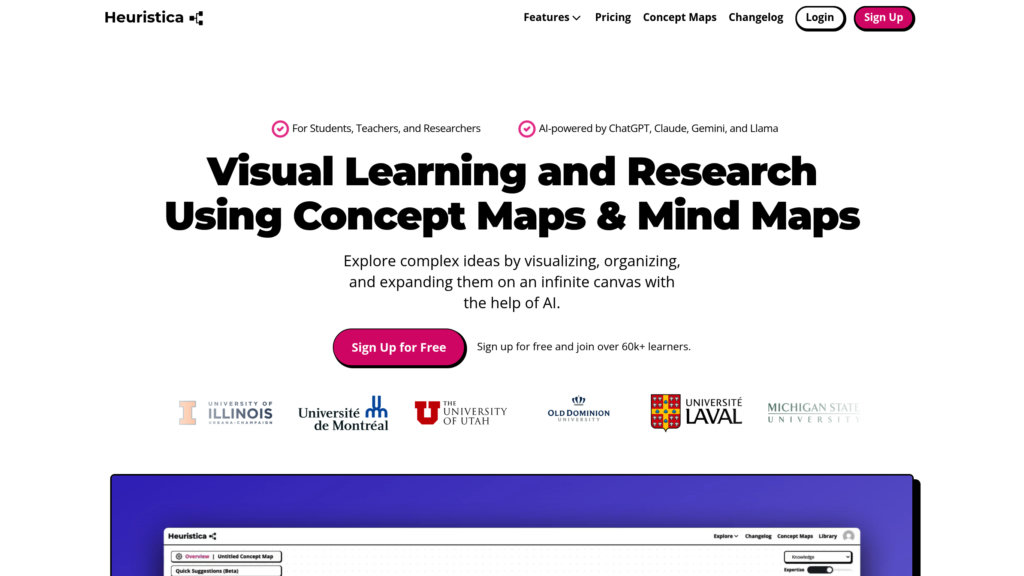Heuristica
Visual concept mapping tool for intuitive knowledge exploration and learning
Introduction
What is Heuristica?
Heuristica represents a cutting-edge AI platform that transforms how people learn, research, and create content using dynamic visual concept maps. Rather than conventional chat interfaces, it employs a mind-mapping approach that enables branching exploration of subjects, letting users navigate complex topics through interconnected visual nodes. The system streamlines AI interaction through predefined action buttons instead of manual prompt writing, making advanced research accessible to all skill levels. It harnesses extensive knowledge repositories including Wikipedia, arXiv, and PubMed, while offering powerful tools for generating summaries, academic papers, and study aids adaptable to various learning preferences.
Key Features:
• AI-Enhanced Visual Mapping: Navigate intricate subjects through an engaging node-based visual interface that supports flexible knowledge organization
• Streamlined Button Controls: Interact with AI intelligence through simple button presses designed for specific tasks, removing the barrier of prompt crafting
• Adaptable Learning Operators: Access specialized functions including simplified explanations (ELI5), detailed elaborations, analogies, and summarization to customize understanding
• Content Generation Capabilities: Convert research findings into polished outputs like blog articles, academic essays, concise summaries, and study flashcards
• Comprehensive Knowledge Integration: Directly access and incorporate information from leading sources including academic databases, encyclopedias, and multimedia content
• Customizable Expertise Settings: Adjust the sophistication and detail level of AI responses to align with individual knowledge backgrounds and objectives
Use Cases:
• Academic Investigation: Scholars can visually structure and investigate complex research areas, fostering deeper insights and novel connections
• Educational Development: Learners of all levels utilize visual knowledge networks to break down complicated concepts and enhance information retention
• Content Production: Authors and instructors efficiently transform research maps into well-organized educational materials and written content
• Creative Ideation: Professionals and innovators employ branching concept diagrams with AI-generated suggestions to develop and refine ideas
